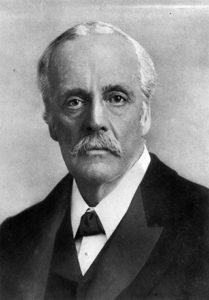By GARY ALLEY
November 2014
From the least to the greatest, all are greedy for gain;
prophets and priests alike, all practice deceit.
They dress the wound of my people as though it were not serious.
“Peace, peace,” they say, when there is no peace.
Jeremiah 8:10-11
Today, Americans are enjoying the holiday, Veterans Day. While many will connect this public observance to honoring the armed services, not many will know the origin of its date, Nov. 11th. This day is observed throughout much of the Western world as Armistice Day or Remembrance Day because the 11th hour of the 11th day of the 11th month marked the end of World War One in 1918. More than half of all soldiers who participated in this infamous war were wounded, killed, or disappeared. One hundred years later, few realize how the results of that devastating war and its peace agreements continue on in our 21st century and the modern Middle East.

Until the beginning of the 20thcentury, the Turkish Ottoman Empire had ruled much of what we call the Middle East for 400 years. With the defeat of the Central Powers, which included the Turks, the Ottoman Empire was carved up by the victorious Allied Powers. Because this war involved so many nations, ethnicities, and religious sects, the peace negotiations of 1919 involved a plethora of “people” problems—who should rule whom, and how.
The American party at those Paris peace negotiations was led by President Woodrow Wilson, who strongly advocated democratic, self-rule for the world’s assorted peoples, in contradistinction to the colonialist agendas of the British and French. At the conclusion of those negotiations, the world map and its boundaries were radically redrawn, with mandates created for future nation states. New borders were conceived for much of the Middle East, including Turkey, Iran, Iraq, Lebanon, Syria, Jordan, Saudi Arabia, and Palestine (part of which later became Israel). As a result of the violence and bloodshed that soon followed the “peace agreements,” many of these Middle Eastern mandates became countries sooner than expected. Field Marshal Archibald Wavell later dryly noted, “After ‘the war to end war’ they seem to have been pretty successful in Paris at making a ‘Peace to end Peace.’”[1]
These new borders for the Middle East had been conceived prior to the end of the war by the British and the French in a secret agreement to divide up the former Ottoman Empire for themselves. This 1916 pact, known as the Sykes–Picot Agreement, has had lasting ramifications upon the Middle East till this day. Arbitrary lines were drawn in the Middle Eastern sand, creating new countries with an unequal and volatile mix of populations previously ruled by one Islamic empire. During the last century, these Middle Eastern countries have often been a stage for corrupt, strongman tyrannies which some have declared a necessary evil for maintaining some sort of forced peace within this region’s boiling cauldron of ethnicities and sects. The recent 2010 Arab Spring, though, was a popular protest movement against this dysfunctional autocratic legacy. The Sykes–Picot Agreement has been accused by some of bequeathing today’s tumult. In fact, the goals of ISIS (Islamic State of Iraq and Syria) are to reunite these former Middle Eastern provinces under one Islamic caliphate, and erase Sykes-Picot once and for all. This includes ISIS’s aim to liberate “Palestine” as well.
Palestine was birthed as a mandate in the aftermath of World War One, under the auspices of the British Empire. Mandatory Palestine was famously preceded by the Balfour Declaration (1917), which expressed the British government’s support for a Jewish state in Palestine. Over the next 30 years, competing Jewish and Arab interests resulted in this small strip of land being ravaged by ethnic, religious, and political violence. After the Arab rejection of the United Nations’ 1947 Partition Plan of Palestine, which recommended a division of the land between Arabs and Jews, and with the withdrawal of British forces in 1948, Mandatory Palestine became a winner-take-all contest between the surrounding Arab nations and the Jewish militias. Even with numerous battlefield victories over the decades, the Jewish state of Israel’s existence for the last 66 years has witnessed one conflict followed by another. Peace has rarely been a bilateral agreement but a temporal acquiescence to international demands. 
Peace is not always a solution. And conflict is not always wrong. History is filled with examples when countries and peoples entered into deceptive and destructive peace pacts. Good politics requires backbone and street smarts in the pursuit of peace. Likewise, there are many conflicts in the past which we could debate were justified, whether defending against an aggressor, squelching a threat, or standing up to an oppressor. The real world rarely defers to idealistic rules of “fair play”. Both conflict and peace can be complicated.
In the past few months, with the rising of tensions, attacks, and discontent, the Holy Land faces an all too familiar situation. Often, we talk about “praying for the peace of Jerusalem,” but how should we pray? With hope and a little imagination. To pray with purpose, we have to believe there is hope, that what we do not have, we believe one day we will. And imagination perceives something that our senses do not. Imagination is an important component for solving problems, so how much more is it required for conceiving of and making peace? As followers of Jesus, as pursuers of peace, let’s pray for the peoples of this land believing that there is hope and there is a way.
[1] Fromkin, David (1989), A Peace to End All Peace, New York: Henry Holt. pg 5.
![]()
